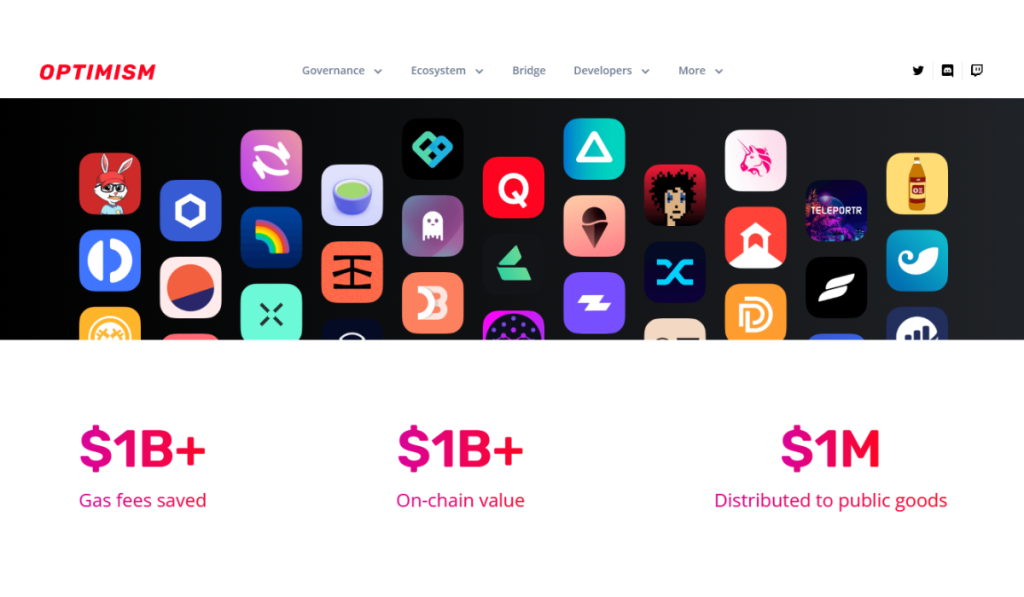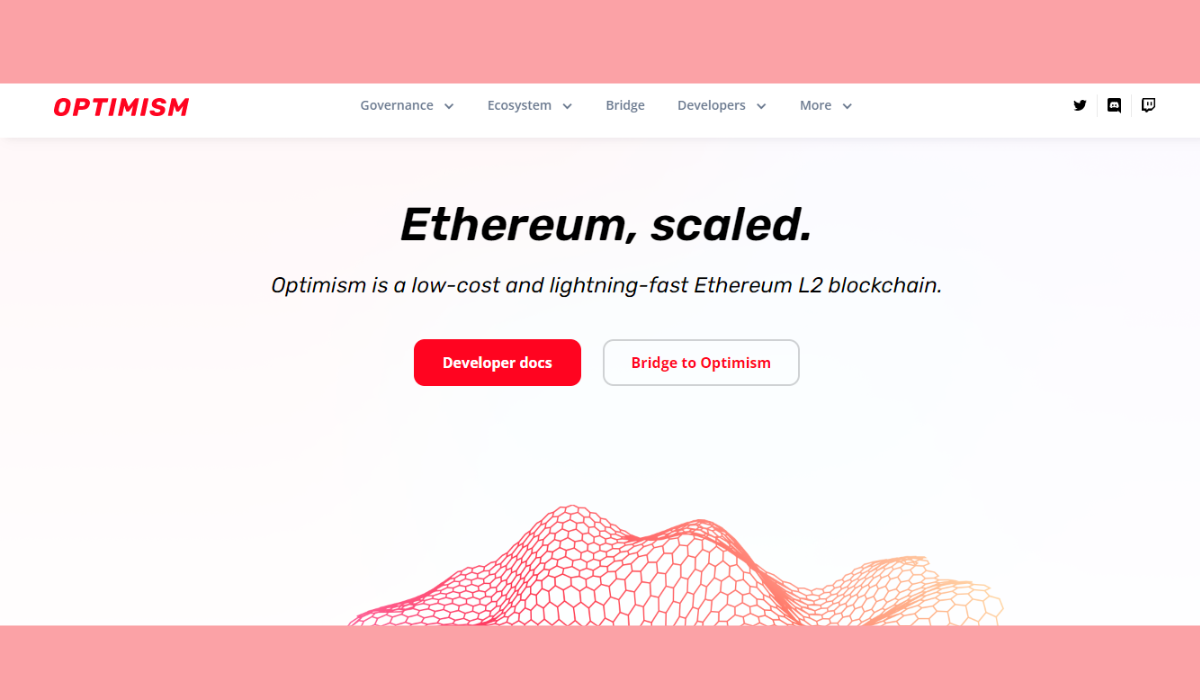What is Optimism OP? How Does Optimism Work?
If you looking to know about Optimism OP and how Optimism work, we have gathered all the required information. Over the years, Ethereum has emerged as the second-largest cryptocurrency platform. It’s one of the leading platforms that offer support for smart contracts. Therefore, a huge number of users have built decentralized apps (Dapps) and Defi protocols on this platform. But it has also significantly increased the gas fees because Ethereum is a slow platform.
And whenever there is congestion on the platform, it starts prioritizing transactions based on the gas fees attached to them. Although Ethereum has planned to introduce a number of upgrades to overcome these problems, it will take a lot of time to get there. Layer 2 solutions like Optimism are currently solving this problem through several technologies.
Thus, users won’t have to wait for long to take advantage of the blockchain industry. They can rest assured about the transactions’ safety while enjoying the fast speed and low gas fees.
What is Optimism OP?
Optimism is a layer-2 solution built on top of Ethereum. It uses advanced data compression techniques to process transactions quickly with a reasonable fee. The platform achieves this goal by validating the transactions on a separate blockchain network. However, the receipts of the transactions are regularly updated on Ethereum.

Unlike other blockchain networks, Optimism creates batches of multiple transactions. Thus, it can process a huge amount of transactions simultaneously. According to recent data, Optimism reduces Ethereum’s fees by 129 times.
Benefits of Optimism OP
Improved Scalability – Based on the nature of the transaction, Optimism can process the transaction 10-100 times faster than the Ethereum network.
Better Security – As it’s mentioned, Optimism is built on top of Ethereum. The users can rest assured about the security and decentralization because the settlement takes place on the Ethereum mainnet.
Reduced Fee – Optimism uses optimistic roll-up technology to validate the transactions in the form of batches rather than validating them separately. Thus, it significantly reduces the transaction cost.
Improved User Experience – Optimism introduces an easy-to-understand interface so that the users can enjoy its benefits even if they don’t have any technical knowledge.
Optimism OP – A Brief History
The whitepaper on Optimism was published in June 2019. The team successfully launched its first testnet in October 2019. It took almost a year to test and improve the platform before it was made available to the general public.
The team finally launched the EVM (Ethereum Virtual Machine) compatible Alpha mainnet in October 2021. After successful testing, the open mainnet went live in December 2021. Since then, the project has gained the attention of most investors.
Synthetix and Uniswap are some of the most popular Defi platforms that have locked a significant amount of money on this blockchain network.
How Does Optimism OP Work?
Optimism prevents congestion by incorporating optimistic roll-up technology. As a result, it offers low gas fees compared to the Layer 1 protocol. On average, users can save more than 100 times gas fees by using this platform.
The platform picks hundreds of transactions from Ethereum and adds them into batches. The transactions are then finalized on the Optimism network. However, the data is updated on Ethereum. Unlike other blockchain networks, Optimism doesn’t require any computations as it considers that every transaction is valid.
But it doesn’t mean that anyone can misuse the platform because the platform automatically picks the suspicious transactions from the batches and runs them through fraud-proofing to avoid double spending and other issues.
Optimistic Rollups vs. ZK Rollups
Most Ethereum-based platforms use ZK rollups to validate transactions while dealing with scalability. The concept of ZK rollups and Optimistic rollups is almost the same because both technologies validate transactions off-chain.
ZK rollups move the batches of transactions to layer 2 and then adds a validity proof to each batch. The data is then updated on Layer 1. On the other hand, Optimism updates data on Layer 1 without even validating the transactions because it revolves around the concept that all transactions are valid.
Thus, it provides better scalability compared to ZK Rollups. And the gas fees are also significantly reduced. However, the network participants have the authority to challenge the validity of a transaction within a week if they find any suspicious activity. The platform then collects data from Layer 1 to check the validity of the transaction that is marked as suspicious.
What Makes Optimism Unique?
Optimism isn’t the only Layer 2 solution dedicated to fixing the scalability issue of Ethereum. There are a few other networks that have a huge amount of users.
Optimism vs. Polygon
Polygon isn’t a Layer 2 blockchain platform but it’s a sidechain that runs in parallel with Ethereum. Polygon has its own security framework due to which most users are reluctant to use it. Similarly, a number of users complain about the long transfer times on this protocol.
Optimism, on the other hand, relies on Ethereum for all security protocols and quickly processes transactions.
Optimism vs. Arbitrum
Both platforms use optimistic rollups for transaction validation. The only difference is that Arbitrum uses a multi-round fraud-proof method to validate the transaction whereas Optimism uses a single fraud-proof method. Arbitrum is more efficient and cost-effective because it carries out transactions on Layer 2.
OP Tokenomics
OP has a total supply of 4.29 billion tokens that will be distributed among 5 different groups. 25% of tokens are allocated to the Ecosystem fund to ensure consistent growth of the platform. 20% of the tokens are allocated to Retroactive Public Goods Funding to encourage developers to introduce new ideas on the platform.
19% of the tokens will be airdropped to the token holders, active community members, and other contributors. 19% of the tokens are reserved for the Core Contributors and the remaining 17% are reserved for Sugar Xaddies (Project Investors).
With a circulating supply of 235 million tokens, OP has a market cap of $394 million. It ranks among the 100 best cryptocurrencies in terms of market cap. The project is designed to release 2% of the total supply every year.
Conclusion
Optimism is a unique kind of blockchain protocol that uses Optimistic rollups to quickly validate transactions on Ethereum. It uses Ethereum’s security framework to ensure users’ interest. Furthermore, it offers significantly low gas fees compared to other Layer 2 solutions. If you need more information about how Optimism works, feel free to get in touch with us.


